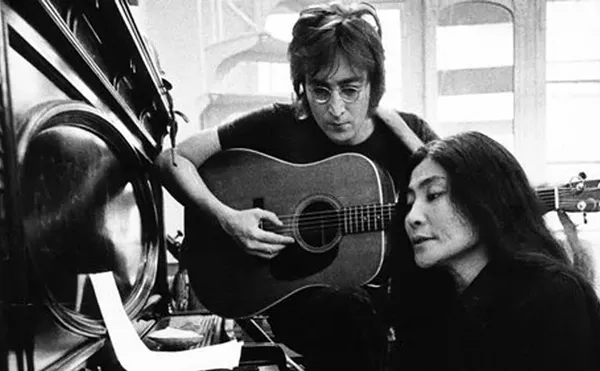"That's where the trouble starts," Gunnar Birkerts will caution, if you ask what he thinks about this city.
"I have certain reservations about Detroit," he explains, adding that maybe they are reservations about cities generally -- cities like this one, with its distinctively American pattern of evacuation and its abandoned urban core. Which makes any talk of comeback a complicated affair. In fact, Birkerts doubts the possibility of a so-called "comeback," questioning whether it's right to force people into contact, now, with the results of their dereliction, "getting the soft flesh around these brutal places," as he puts it.
Whether you agree or disagree with his frequently controversial views, Gunnar Birkerts comes honestly by his opinions. A native of Latvia who studied architecture in Germany before immigrating to the United States in 1949, Birkerts has spent his career in and around Detroit. He established his own practice here in 1959, soon afterward undertaking the design of the 1300 Lafayette East apartment building (1963), his first large commission.
Since then, he has continued to work in Detroit and its suburbs, practicing at the same time on a national and international level, and winning numerous awards along the way (including prizes from the Michigan Society of Architects, the American Institute of Architects, and the American Academy and Institute of Arts and Letters). Among Birkerts' projects that Detroiters might be familiar with are the DIA South Wing Addition (1964), Livonia Public Library (1967), Calvary Baptist Church in Detroit (1977), IBM Office Building, Southfield (1979), University of Michigan Law School Addition (1981), Domino's Pizza Headquarters, Ann Arbor (1984), as well as the altar and furniture for the Pope's visit to the Silverdome (1987).
By his own account, he was particularly close to the city and its planning department in the crucial decade of the 1970s, when much of our present-day downtown was created (such projects as the Renaissance Center, Hart Plaza, Joe Louis Arena, the Washington Boulevard redesign).
"You can try me," Birkerts responded, when asked if he would be willing to submit to an interview, "I might surprise you." He was true to his word, as the following excerpts illustrate.
Metro Times: What kind of advice would you offer the city of Detroit at this point, when a lot is probably going to be built and a lot is probably going to be torn down?
Gunnar Birkerts: This is where the trouble starts. You may not hear what you want to hear from me.
I have certain reservations about Detroit and maybe a reservation generally about cities. Detroit is an example of a city with no core. The core is practically demolished and not functioning. And then a suburban ring develops around it. And I think that is the future of Detroit. I don't think that Detroit will really "come back." Detroit will become a center for entertainment and not for business and not for residential. I think the tendency is really to pull out the permanent residents and then put in the big businesses, the stadia, the concert halls, the conference centers maybe, that develop a lot of people, in and out, and they come, they drop their money and they go.
The question is whether resettlement of downtown should even be done, then, whether it's proper to trickle in token residents where there are no real communities. No. I can't see the community aspect in a stadium-entertainment district. I don't think a strong community structure would be developed -- a school or a church.
It might not be right, then, to project people into the city now, as it is. I question whether we ought to be getting the soft flesh around these brutal places. I would feel sorry for the people injected into these areas.
MT: At the beginning of the modern industrial era, Detroit was often referred to as the "city of the future," the "city of tomorrow." Now that America's cities are being abandoned, now that the core is dying or dead in many older cities, Detroit might once more be a representative "city of tomorrow." Do you agree?
Birkerts: In this conscious, destructive way, yes. Maybe Detroit is a city of the future in that sense, because if we blow down the Hudson's building, things are different. It's incredible. My European mind doesn't understand these demolitions. But that's what we are doing. We are clearing out the city to bring in the big money makers, the entertainers, and it's right in the middle.
MT: Are there lessons to be learned, then, from previous development schemes?
Birkerts: Yes. Had the Ren Cen been built horizontally, we would have saved Detroit. If you would have taken the whole square footage inside the Ren Cen and spread it horizontally, you would have gone way into Grand Circus Park and surrounding areas, leading to a lot of mid-rise development. And the core of the city would have had a different look.
MT: Do you have any thoughts about what the city might do with its many abandoned structures, like the Hudson's building?
Birkerts: I think a creative architectural response is possible. But when it comes to Hudson's, the problem is internal. It's a space of a certain kind. It's huge. There should be a metamorphosis of use and form. It should change through time. There may be problems -- too many floor plates and so on -- but architects will just have to find a way how to do it. But the problem might be programmatic: what's to be the use of the building?
There are a number of buildings here that are remarkable and they should be forever in the vernacular ... whatever happens. And they are solid enough to be readapted over and over again if necessary. I think we have to keep our heritage. We have to keep it and nurture it. And not just blow it down every time something changes. As you can see, I don't always agree with what is going on.
It remains to be seen whether we will blow our most recent renaissance, like Detroiters have blown it -- historically speaking -- time and time again (in addition to getting things right once in a while too). Which calls to mind one of our first great citizens, Father Gabriel Richard, cofounder of the University of Michigan and also the author, by accident, of our city motto. "Speramus meliora; resurget cineribus," that's what Richard was overhead to be mumbling as he walked through the ruins of his Detroit, which had burned to the ground, all of it, in a terrible fire on June 11, 1805. "We hope for better things; it will arise from its ashes." Those words, in Latin, are still imprinted on Detroit's official seal.
More than once this city has had to arise from the ashes of disaster and mistake, so that it becomes an open question whether we're capable of learning from the "heritage" Birkerts describes. Can we plan together for the future; will the hoped-for better days arrive? Will we escape the nostalgia for "the good old days" that threatens new ideas? That remains to be seen.
E-mail comments to letters@metrotimes.com





